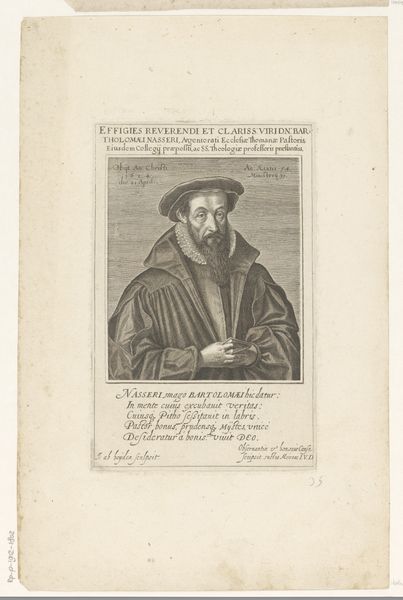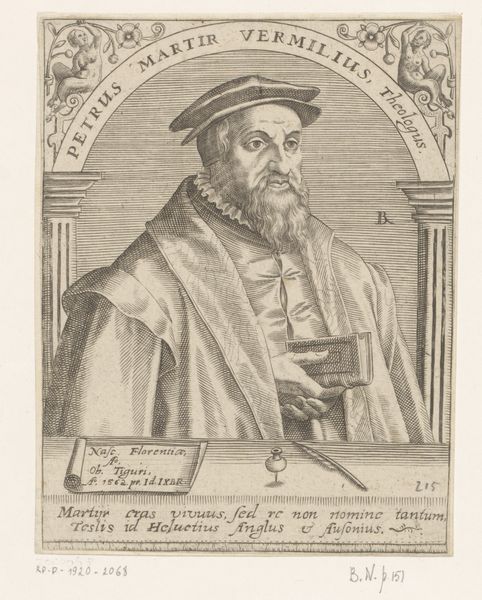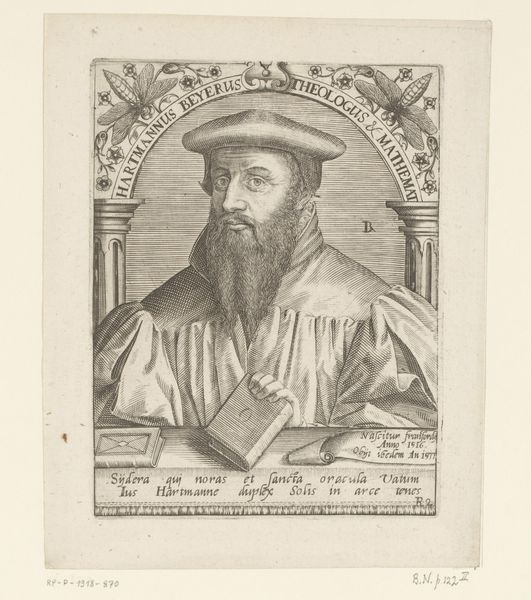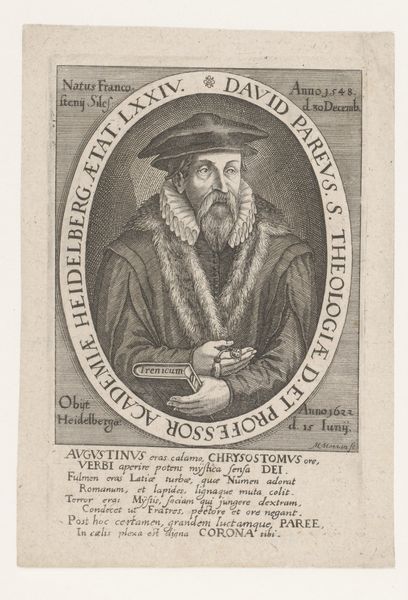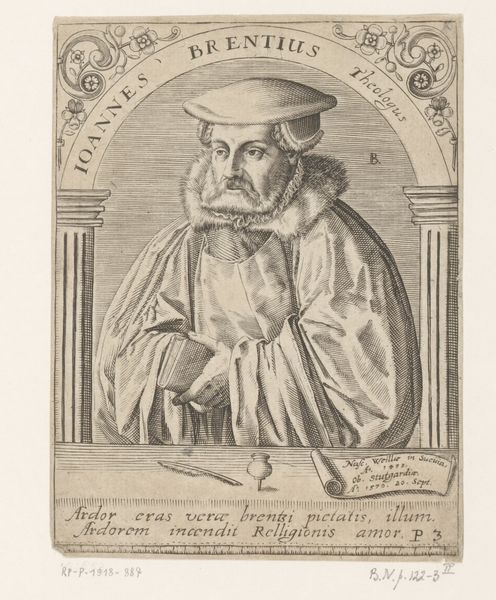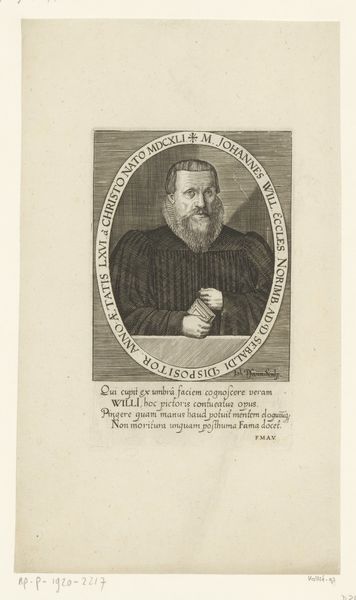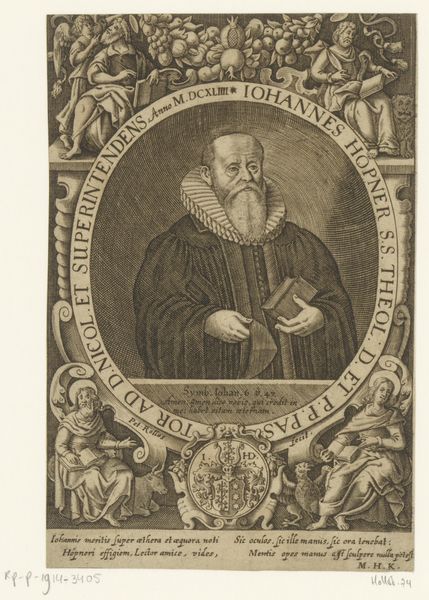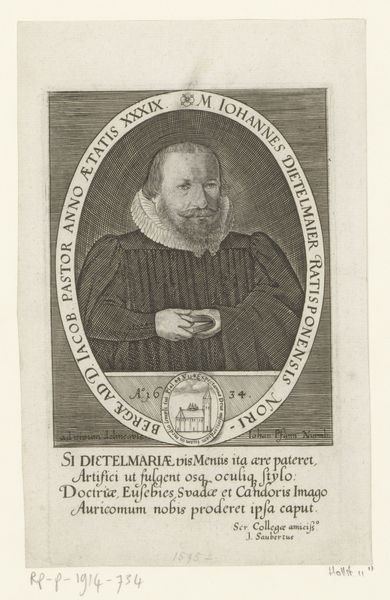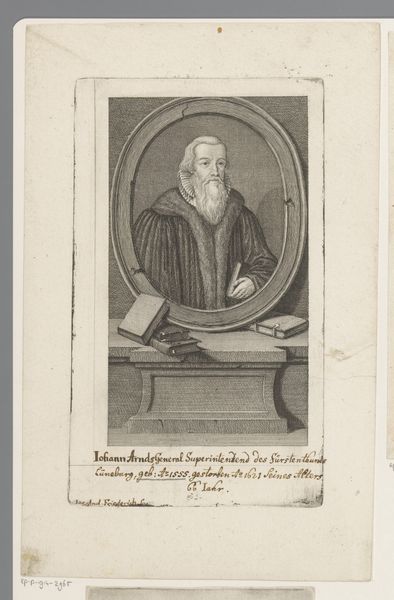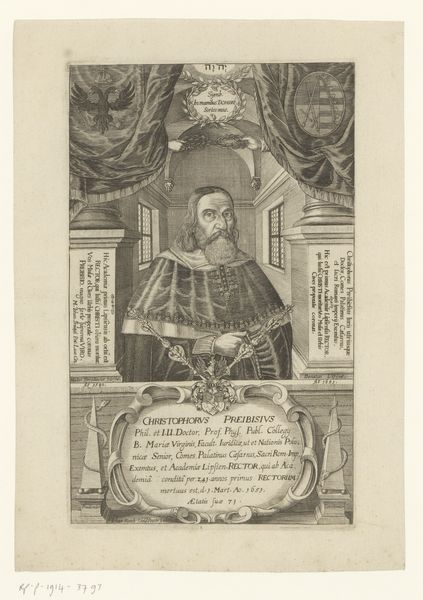
print, engraving
#
portrait
#
baroque
# print
#
old engraving style
#
history-painting
#
engraving
Dimensions: height 210 mm, width 156 mm
Copyright: Rijks Museum: Open Domain
Editor: This is "Portrait of Johannes Aepinus," an engraving made sometime between 1705 and 1769 by Christian Fritzsch. It's a very formal, somewhat stern-looking depiction. I am struck by the contrast of textures in the robes. What symbols stand out to you in this portrait? Curator: The most immediate symbol is the book he holds. Consider the Reformation context: Aepinus was a leading Lutheran theologian. The book signifies knowledge, theological authority, and perhaps the very word of God made accessible to the common person through translation. This was revolutionary! Editor: So, the book isn't just a generic symbol of learning; it's tied to a specific religious movement and its values. Curator: Exactly. The weighty robes also tell a story. The textures emphasize his status and authority within the church hierarchy. But do you see how the engraver’s style adds to this sense of history? The use of line, the almost sculptural modeling…it evokes a lineage of thinkers and leaders. Editor: It does seem to deliberately connect him to a larger tradition. So, between the book, the robes, and even the style of the engraving, there is a cultural and even historical symbolism in the portrait? Curator: Indeed! Think about the power of images at this time. This wasn't just a likeness; it was a carefully constructed statement about faith, knowledge, and authority designed for circulation and, thus, commemoration. What do you make of the text framing the image? Editor: I hadn’t paid it much attention before, but now I see how the inscription adds another layer of meaning… tying him to scripture. Thanks; that brings new depth to the print for me. Curator: Absolutely. Every element in such a portrait served to construct and communicate very specific meanings about the subject.
Comments
No comments
Be the first to comment and join the conversation on the ultimate creative platform.
